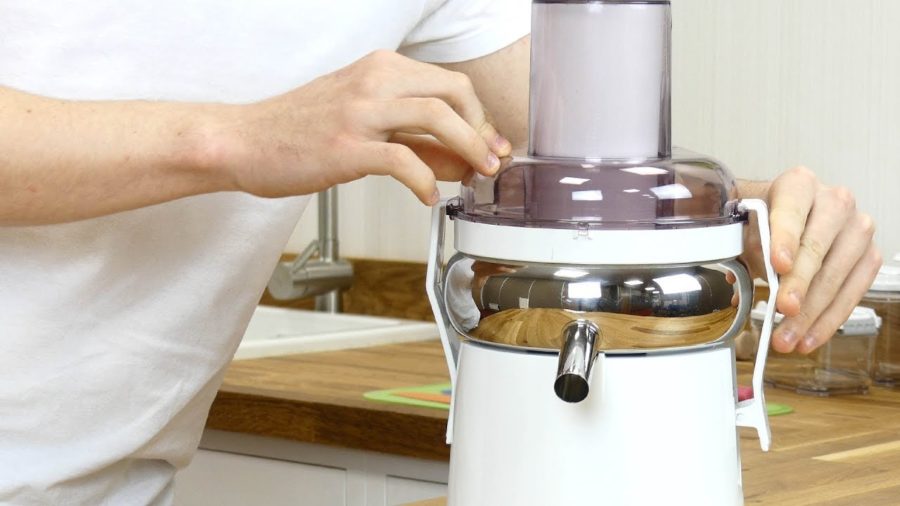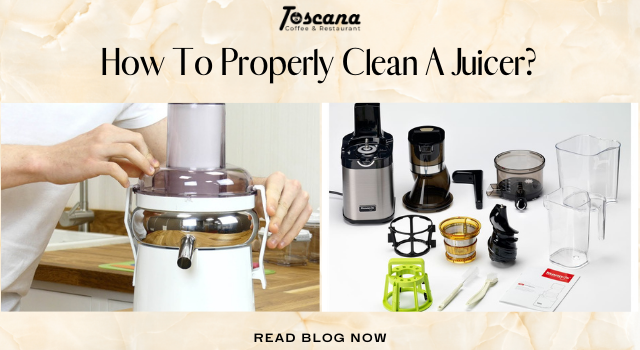How To Properly Clean A Juicer?
Juicer is a convenient machine that provides your daily diet with healthy juice from fruits and vegetables. Owning a juicer is useful because you can make delicious homemade juice in your kitchen. Although you can just squeeze lemon and orange, you may need a juicer to get juice from other fruits and vegetables

Despite the benefits it offers, due to the seemingly complicated structure of juicers, people usually worry about whether they are cleaning the machine properly. Every type of juicer needs proper cleaning to keep the machine sanitary and durable.
A juicer can be expensive (it can cost up to $500) and it should be able to last for a long time. Since keeping the juicer clean plays an important role in the maintenance of this machine, everyone who owns a juicer or is planning to purchase one should know the in-and-out of the cleaning technique.
Juicers need to be clean regularly after every use. Regular cleaning will save you the inconvenience of dealing with accumulated residuals and stains. Thus, keeping your juicer clean can also ensure that your juice is clean and healthy. Here are the steps that can help you with your cleaning process.
7 Steps to clean your juicer properly (How To Properly Clean A Juicer?)
Preparation
To prepare for the cleaning process, you need dishwashing soap, a toothbrush, a soft brush, and some soft cloths to keep the machine clean. Additionally, you should also prepare a spatula to deal with the residual remaining in the machine.
Disconnect the machine from the power
Turn off your juicer and make sure that your juicer is unplugged from any source of electricity. It is dangerous to clean your juicer while it is still plugged in a power socket as it can cause fire and electric shock. This is a crucial step so double check if you need it. Safety always comes first!
Remove the pulp and clean your container
Use the spatula to get rid of the pulp remaining from the juicing process in the container of your juicer. Then, diffuse dishwashing soap into the water and use this soap water to clean your container.
Separate detachable parts and clean them
It is important to keep all the components of the machine clean. Use your dishwashing soap to clean all the detachable parts of the machine but be gentle in this process to protect your juicer from any scratches or damages. Some parts of the machine can be a little more sensitive than the others. Clean the mesh strainer carefully because the pulp can still be stuck there. Make sure to rinse everything thoroughly (preferably with lukewarm water) when you are done with all the cleaning.

Clean tricky parts with a toothbrush
Some machines can come with a cleaning brush to help you clean areas that are hard to reach with your hand. If your machine does not come with one, a toothbrush is a good substitute. Use the brush to clean every part of the machine carefully.
Wipe the non-detachable parts
Use a soft cloth or slightly damp sponge to gently clean the remaining parts of the juicer to remove any stains or residuals. One important thing to remember is that other than the removable parts, never rinse the non-detachable parts of your juicer in water. Water can damage the electric and operational system of a juicer permanently.
Dry the parts and reassemble the juicer
Make sure that every part of your juicer is completely dry before putting them back together. Water always brings potential damage to the motor of any machine and your juicer is no exception.
Here is a detailed and useful video on how to clean your juicer to help you visualize the cleaning process better:
FAQs
What are the brown and grayish coatings appearing here and there in my juicer?
This coating is the mixture of dried juice and water particles accumulated in your juicer. This may appear if you do not clean your juicer after every use or do not clean and dry all the parts properly. These spots are the perfect environment for bacteria to grow and invade your machine as well as your juice. Hence, they are signs telling you that you need to clean your juicer more thoroughly.
You can still get rid of these spots by soaking the parts that have these spots in a mixture of warm water, vinegar, and lemon for a long time. After this process, you should be able to remove the coating easily.
If you closely follow the steps below every time you are done using your juicer, you can prevent these spots from forming effectively.
How to handle tough residual that does not go away after cleaning?
Cleaning your juicer improperly and insufficiently can allow tough residuals to accumulate over time. In this case, you can deep clean your machine again by soaking the parts you need to clean in the mixture of water, lemon, and vinegar. You can also mix water with baking soda to make a deep cleaning substance in this case.
What juicer is easier to clean?
The cleaning process can be quite inconvenient because it involves many steps. If you want a simpler cleaning process, you can opt for Aicok Slow Masticating Juicer, Hurom HP Slow Juicer, or Omega Slow Masticating Juice Extractor and Nutrition Center. You can find all of them easily on Amazon.
Read More:
Are Blender Bottles Dishwasher Safe? Key Factors To Keep In Mind
Conclusion
Although the cleaning process can be quite tiresome, you have to keep your juicer clean all the time to get the best and healthiest juice from this machine. Use this guide to clean your juicer properly and maintain it properly.


